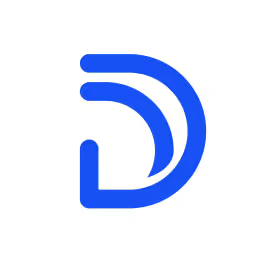myphoner Alternatives
Find your next sales dialer. This guide compares 10 Myphoner alternatives on features, pricing, and performance to help you decide.

Myphoner is a popular choice for many sales teams, and for good reason. It performs well for straightforward cold calling. Its simple design helps agents focus on dialing leads without distractions, which is great for specific campaigns.
However, some users say it lacks deep CRM integration, and others report occasional lags. Because of this, you might look for an alternative. We analyzed the best options based on G2 reviews to help you choose. Let's get started.
Consider 11x for Your Sales Team
If your sales strategy uses digital workers, consider 11x. It provides autonomous agents to handle specific sales tasks. This can be a useful addition for teams looking to automate parts of their outbound process.
11x is a GTM platform that uses AI agents to manage the sales process. Alice finds prospects, runs outreach via email and LinkedIn, and maintains your CRM. Julian qualifies inbound leads and books meetings.
It replaces separate tools for data enrichment, outreach, and email warmup by unifying these functions into a single platform.
myphoner Alternatives
Below is a detailed analysis of top Myphoner alternatives. We examine each option's pricing, features, and specific advantages or disadvantages when compared directly to Myphoner.
1) Aircall
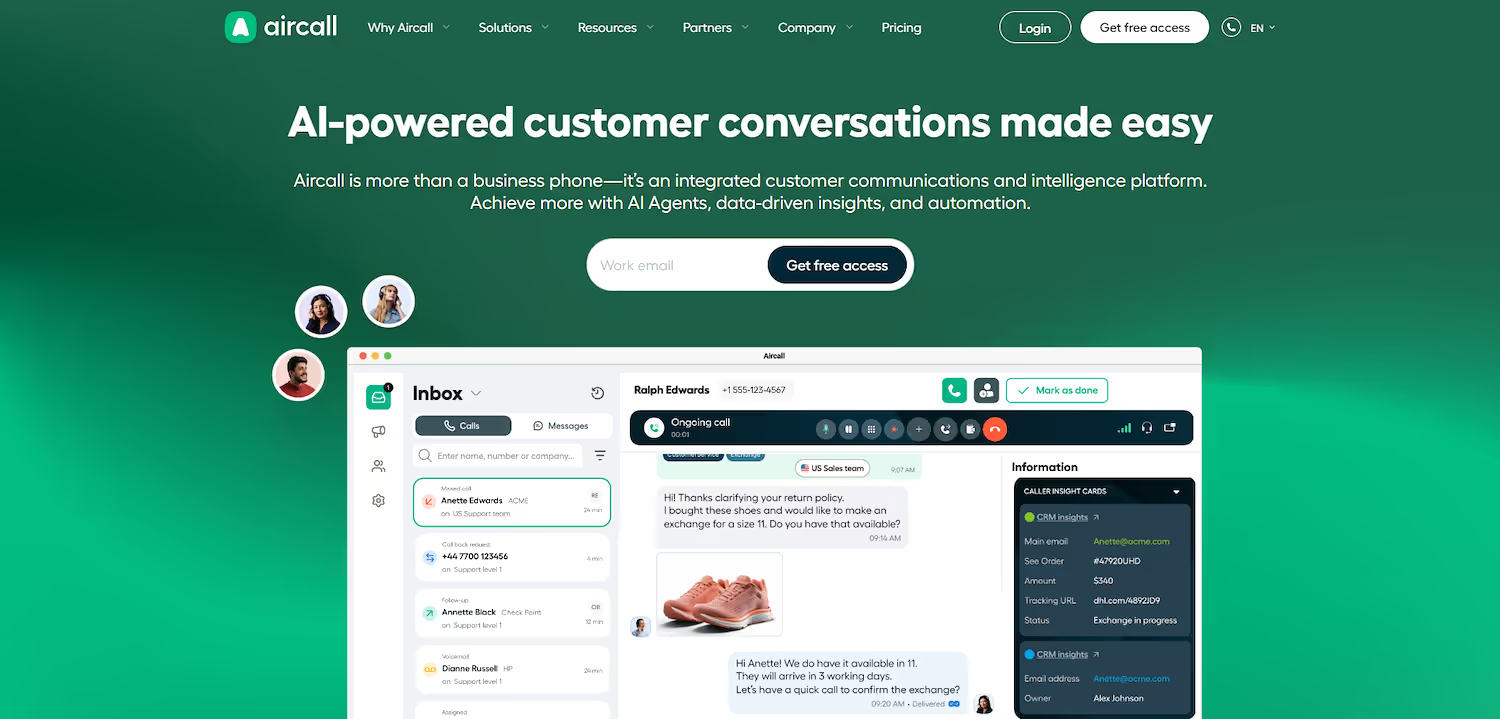
Aircall is a cloud communication platform that unifies voice, SMS, and WhatsApp. It supports outbound sales with a Power Dialer and click-to-dial functions. The system also manages inbound support with an IVR and call queues, and offers over 100 native integrations with tools like Salesforce and HubSpot.
Aircall's Main Features
- Handles, qualifies, and routes inbound calls autonomously 24/7 with an AI voice agent.
- Provides real-time coaching during live calls and automates follow-up workflows with AI Assist.
- Manages WhatsApp conversations alongside calls and texts from one unified workspace.
- Offers powerful analytics to track KPIs, identify trending topics, and review specific calls.
How Aircall Compares to Myphoner
Average Review score: 4.4/5 stars based on 1,314 G2 reviews.
- Aircall unifies voice, SMS, and WhatsApp communication in one platform. This is different from Myphoner, which focuses primarily on outbound calling.
- It manages both inbound and outbound calls with features like IVR and call queues. This offers broader functionality than Myphoner's outbound-centric design.
- The platform includes AI-powered features, such as an AI voice agent and real-time coaching, which are not part of Myphoner's direct calling experience.
- With over 100 native integrations, Aircall provides more extensive connectivity to CRMs like Salesforce compared to Myphoner's integration options.
Aircall's Potential Disadvantages
- Aircall requires a three-user minimum for its plans, and some users find the pricing high for smaller teams. This structure can be less suitable for solo agents who only need a simple dialer like Myphoner.
- Its platform combines multiple communication channels like voice, SMS, and WhatsApp. This might introduce unnecessary complexity for sales teams that prefer Myphoner's simple design for focused cold call campaigns.
- Some users report that the application can sometimes lag or disconnect automatically. Call quality can also depend on internet strength, which might be a factor for teams that need consistent performance.
Pricing and Cost Considerations
Aircall's pricing starts at $30 per user per month, billed annually, with a required three-user minimum. This model can be a larger investment for solo agents or small teams, who may find Myphoner's pricing more suitable for straightforward outbound calling needs.
2) Freshdesk Contact Center

Freshdesk Contact Center is a cloud-based phone system for sales and support teams. It allows businesses to manage inbound and outbound calls from one place. The system suits teams that need a unified solution for voice communication beyond basic dialer functions.
Freshdesk Contact Center's Main Features
- Routes incoming calls to specific agents or teams based on predefined rules and skill levels.
- Allows for the creation of custom call queues and interactive voice response (IVR) menus to manage inbound inquiries.
- Features call monitoring and recording for quality assurance and agent training purposes.
- Provides analytics dashboards to track call metrics like wait times, abandonment rates, and resolution rates.
How Freshdesk Contact Center Compares to Myphoner
Average Review score: 4.1/5 stars based on 142 G2 reviews.
- Freshdesk Contact Center handles both inbound and outbound calls with features like call queues and IVR menus. This provides a more complete phone solution compared to Myphoner's focus on outbound dialing.
- The platform unifies voice and email channels in one place. This allows teams to manage different types of communication, while Myphoner is built specifically for voice-based outreach.
- It offers advanced call routing that directs incoming calls to agents based on skill or availability. This is a step up from Myphoner's direct dialing model, which is less suited for managing inbound traffic.
- This system includes analytics dashboards to track metrics like wait times and resolution rates. This offers deeper performance insights than the more straightforward call tracking available in Myphoner.
Freshdesk Contact Center’s Potential Disadvantages
- Freshdesk Contact Center combines voice and email. This might add complexity for teams that prefer Myphoner's simple interface, designed specifically for focused outbound calling.
- Its features support both inbound and outbound calls. This differs from Myphoner, which is built for high-volume outbound sales and can offer a more direct workflow for cold calling.
- The platform's broad functionality may require more setup. In comparison, Myphoner's focus on a single task lets agents start dialing with little configuration.
Pricing and Cost Considerations
Freshdesk Contact Center offers a free plan and paid tiers starting at $15 per user per month. The free option makes it more accessible for small teams than Myphoner, while its paid plans support broader call center functions beyond Myphoner's focus on dedicated outbound calls.
3) RingCentral MVP

RingCentral MVP is a unified communication platform. It combines phone, video, and message capabilities into a single system for businesses to manage communications.
The platform supports diverse business needs, from simple phone calls to complex contact center operations. It is an option for teams that need more than a basic dialer.
RingCentral MVP's Main Features
- It provides HD video conferencing that includes screen sharing and meeting recording functions.
- The system includes team messaging that allows for file sharing and real-time chat between users.
- It functions as a business phone system with a multi-level auto-attendant and advanced call forwarding rules.
- The platform supports sending and receiving faxes online from computers or mobile devices.
How RingCentral MVP Compares to Myphoner
Average Review score: 4.0/5 stars based on 154 G2 reviews.
- RingCentral MVP unifies phone, video, and messaging into a single platform. This is different from Myphoner, which is built specifically for outbound calling.
- It supports communication across multiple channels, including voice, web chat, and SMS. Myphoner, in comparison, focuses primarily on voice-based outreach.
- The platform handles both inbound and outbound calls with features like session routing and queuing. This offers more comprehensive call management than Myphoner's direct outbound model.
- RingCentral provides over 300 prebuilt integrations, offering more extensive connectivity with other business tools compared to Myphoner's integration options.
RingCentral MVP's Potential Disadvantages
- RingCentral MVP combines phone, video, and messaging into one system. This can create complexity for teams that only need a simple dialer, unlike Myphoner's focused interface for outbound calls.
- The platform's setup can take time. Some users report an implementation period of around two months, which is longer than the quick configuration of a specialized tool like Myphoner.
- Its broad feature set includes tools like video conferencing and online fax. These functions might be unnecessary for a team that just needs to make a high volume of calls, a task where Myphoner's lean design is more direct.
Pricing and Cost Considerations
While we've covered key features and use cases in this comparison, pricing models can vary significantly between tools. For the most accurate and up-to-date pricing information, we recommend visiting RingCentral MVP's official website.
4) Dialpad Ai Sales

Dialpad Ai Sales is a workspace that combines communication and artificial intelligence for sales teams. The platform provides a phone dialer to support outbound sales campaigns and customer interactions from a single interface.
It is built for sales organizations that need to manage calls and analyze conversations. The system integrates AI into the daily workflow of sales representatives for tasks like outreach and follow-up.
Dialpad Ai Sales's Main Features
- Provides real-time transcription and AI-powered analysis of sales conversations.
- Integrates AI into the sales workflow to automate tasks like outreach and follow-up.
- Combines voice calls, messaging, and video meetings within a single interface.
- Offers live coaching and assistance to sales representatives during calls using AI.
How Dialpad Ai Sales Compares to Myphoner
Average Review score: 4.4/5 stars based on 4,351 G2 reviews.
- Dialpad Ai Sales provides real-time transcription and AI analysis of sales calls. This offers more detailed insights for coaching than Myphoner's standard call logging.
- It unifies voice, messaging, and video into a single workspace. This is a broader approach compared to Myphoner, which is designed specifically for voice-based outreach.
- The platform includes live AI coaching to assist sales reps during calls. This provides on-the-spot guidance, a feature not available in Myphoner's focused dialing environment.
- This tool captures an agent's screen during calls for review and training. This offers a level of quality assurance that is different from Myphoner's core functionality.
Dialpad Ai Sales’s Potential Disadvantages
- Dialpad Ai Sales integrates multiple communication tools, which can introduce complexity. Some users report a learning curve for administrators, unlike Myphoner's straightforward design for focused outbound campaigns.
- Some users report that the application sometimes lags or disconnects calls. This can interrupt the workflow for teams that require consistent performance for a high volume of calls, a focus of a dedicated dialer like Myphoner.
- The platform includes many features like AI analysis and video meetings. These tools might be unnecessary for teams that need a lean, cost-effective solution for direct outbound calls, which is Myphoner's primary function.
Pricing and Cost Considerations
While we've covered key features and use cases in this comparison, pricing models can vary significantly between tools. For the most accurate and up-to-date pricing information, we recommend visiting Dialpad Ai Sales's official website.
5) Kixie
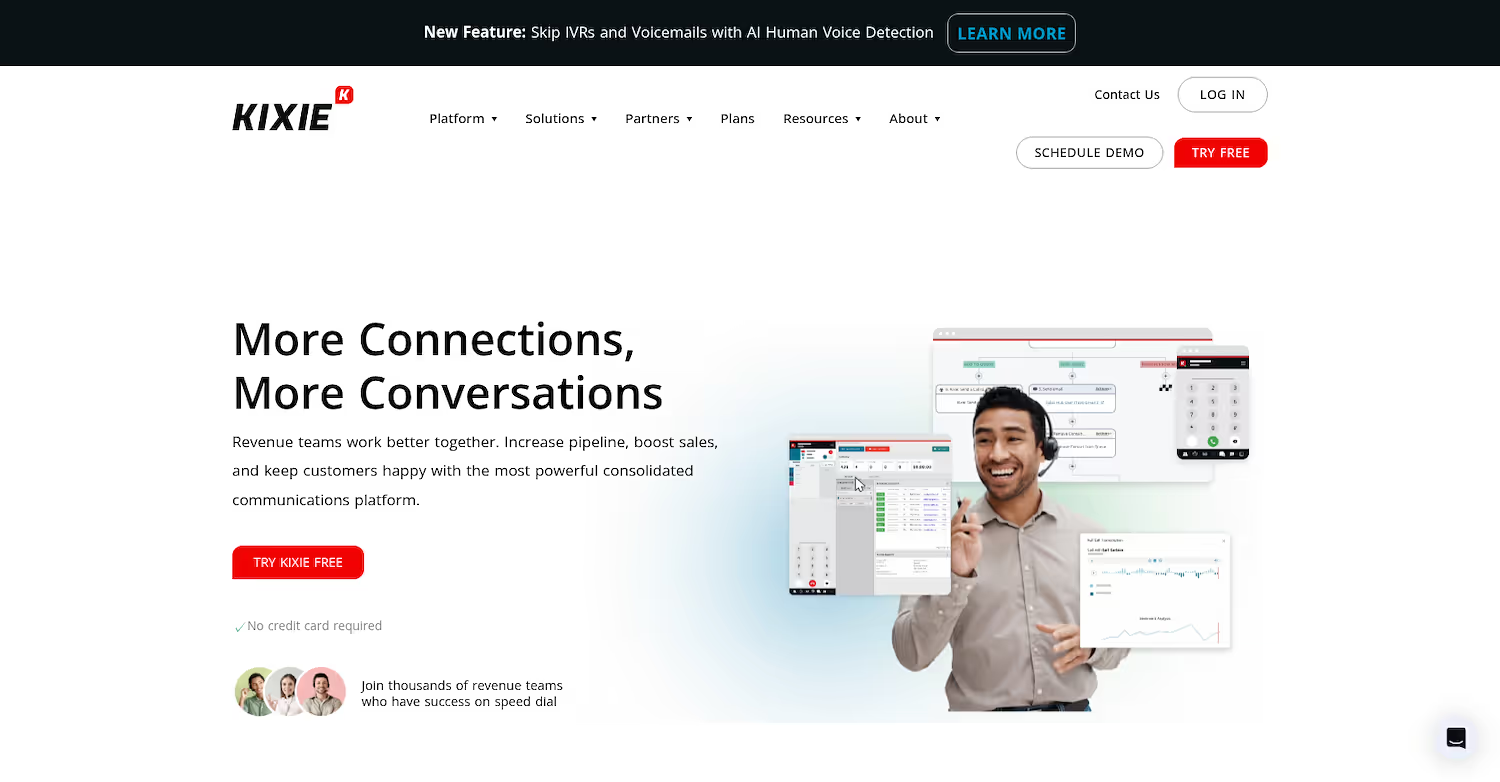
Kixie is a sales engagement platform with a phone dialer for sales teams. The system provides tools to support outbound campaigns and customer communication. It serves as an option for businesses that need a Myphoner alternative for their sales process.
Kixie's Main Features
- Dials up to 10 leads simultaneously with a multi-line power dialer that has built-in machine detection.
- Provides AI-powered local-presence dialing and progressive Caller ID to reduce the chance of calls being marked as spam.
- Includes AI human voice detection that automatically bypasses IVRs and voicemails, connecting agents only to live prospects.
- Offers conversation intelligence for keyword tracking, sentiment analysis, and AI-generated call summaries that sync with a CRM.
How Kixie Compares to Myphoner
Average Review score: 4.8/5 stars based on 830 G2 reviews.
- Kixie offers a multi-line power dialer to call up to 10 leads at once. This is different from Myphoner, which focuses on single-line dialing for individual calls.
- The platform uses AI-powered local presence dialing to show a local number to prospects. This can improve answer rates compared to Myphoner's standard dialing.
- It includes AI human voice detection to bypass voicemails and IVRs, connecting agents only to live people. This differs from Myphoner, where agents may handle these manually.
- This tool provides conversation intelligence with AI call summaries. This offers deeper performance insights than the basic call tracking available in Myphoner.
Kixie’s Potential Drawbacks
- Kixie includes many advanced features, which might complicate the workflow for some teams. Users who only need a straightforward dialer may prefer Myphoner's simpler, more focused design.
- Its extensive capabilities can mean a longer setup period for new users. In comparison, Myphoner allows agents to begin dialing almost immediately with minimal configuration.
- Some users report occasional lags, which can sometimes occur with complex systems. Myphoner's single-purpose build may offer a more stable experience for basic, high-volume calling.
Pricing and Cost Considerations
While we've covered key features and use cases in this comparison, pricing models can vary significantly between tools. For the most accurate and up-to-date pricing information, we recommend visiting Kixie's official website.
Automate Sales Tasks With 11x
For teams interested in digital sales workers, 11x offers autonomous agents for prospect discovery and lead qualification. This automates parts of the outbound process.
Visit the 11x website to learn how its AI agents can support your sales goals.
With 11x, we use AI to manage your sales process. Alice identifies accounts, enriches data, and handles outreach, while Julian takes calls, qualifies leads, and books meetings. This unifies functions like intent data and email warmup into one platform, removing the need for extra tools.
Book a demo to see the platform in action.
6) PhoneBurner

PhoneBurner is a power dialer platform that helps sales teams increase outbound call volume. The software automates workflows like voicemail drops and email follow-ups, so agents can move from one call to the next without manual tasks.
This system is for sales professionals who need to contact many leads efficiently and manage their outreach from a single dashboard.
PhoneBurner's Main Features
- Includes a power dialer that places calls without a delay and blends voice, email, and SMS communication.
- Uses ARMOR® technology for real-time spam-flag detection, remediation, and number rotation to improve answer rates.
- Provides a cadence builder to create repeatable, multi-step follow-up sequences for leads.
- Automates post-call workflows with one-click dispositioning, automatic emails, and task creation.
How PhoneBurner Compares to Myphoner
Average Review score: 4.7/5 stars based on 260 G2 reviews.
- PhoneBurner includes a power dialer that automates post-call tasks like leaving voicemails and sending emails. This is different from Myphoner, which focuses on a more manual, single-call workflow.
- It uses ARMOR® technology to detect spam flags and rotate numbers, which can improve answer rates compared to Myphoner's standard dialing function.
- The platform blends voice, email, and SMS communication into one workflow, offering more outreach channels than Myphoner, which is built mainly for calling.
- Its system includes a cadence builder to create multi-step follow-up sequences. This allows for more structured outreach than the direct calling approach in Myphoner.
PhoneBurner’s Potential Drawbacks
- PhoneBurner has a higher price point, which some users note as expensive. This structure is less suitable for solo agents who find Myphoner's cost more aligned with basic dialing needs.
- The platform's extensive features, like automated workflows, can add complexity. This contrasts with Myphoner's simple interface, which lets agents focus purely on dialing without extra setup.
- Its power dialer automates calls quickly, which may not suit sales teams that prefer Myphoner's manual, single-call approach for more personalized conversations. The automated pace can feel less controlled.
Pricing and Cost Considerations
PhoneBurner's plans are generally considered more expensive, making them less suitable for solo agents who may prefer Myphoner's cost structure for basic dialing. For detailed and current pricing, it is best to visit PhoneBurner's official website.
7) VanillaSoft
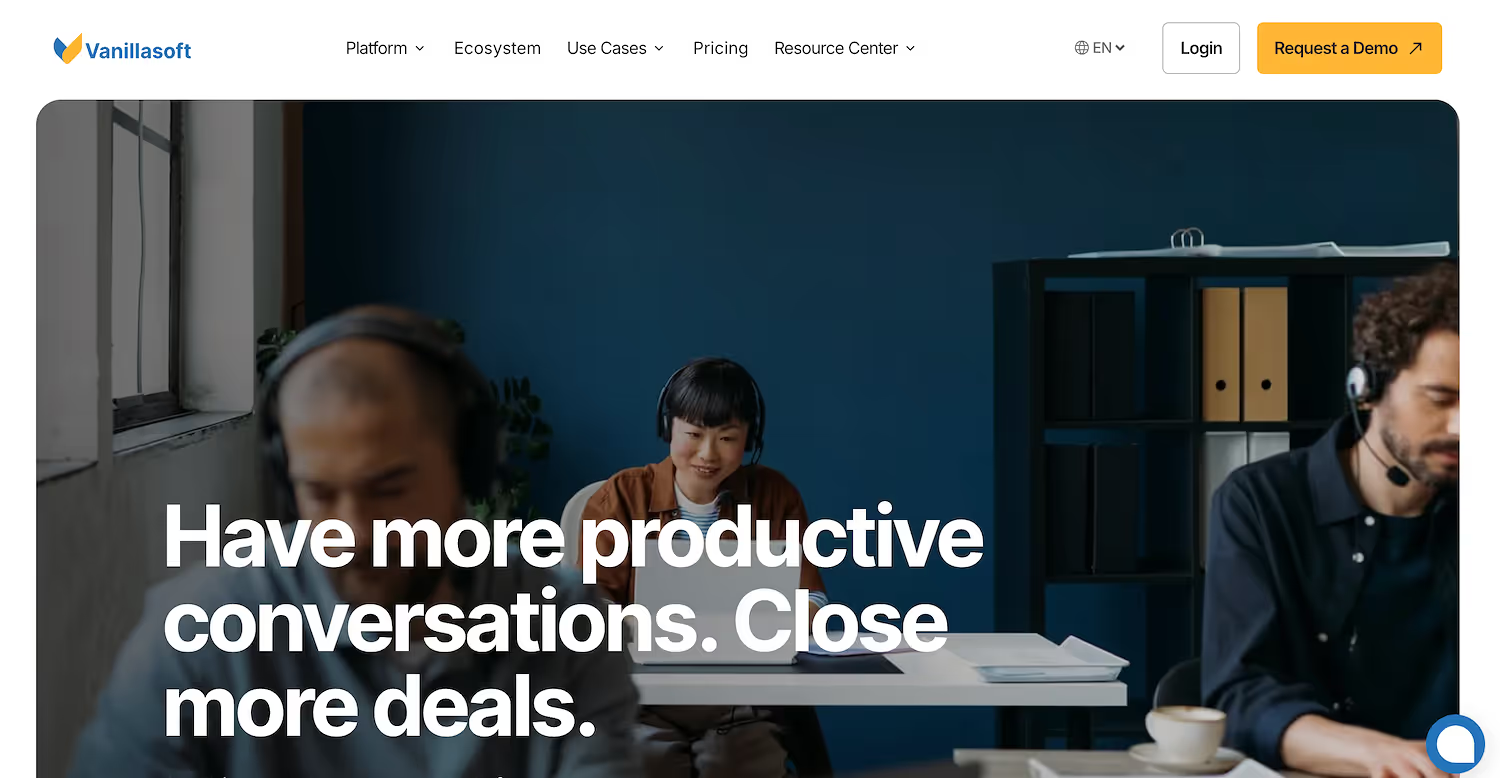
VanillaSoft is a sales engagement platform for sales teams that need to manage outbound campaigns. It offers tools for lead follow-up, including phone dialing, from a central platform. This makes it a relevant alternative for businesses that look for a structured sales solution.
VanillaSoft's Main Features
- Automatically assigns the next best lead to each representative through queue-based distribution.
- Offers power, preview, and progressive auto-dialing modes to increase caller activity.
- Provides dynamic call scripts to keep sales representatives on-message during conversations.
- Includes a built-in scheduling tool to book meetings without leaving the platform.
How VanillaSoft Compares to Myphoner
Average Review score: 4.6/5 stars based on 545 G2 reviews.
- VanillaSoft uses queue-based lead distribution to automatically assign the next best lead to an agent. This is different from Myphoner, where agents often manage their lead lists manually.
- It offers multiple dialing modes, such as power and progressive auto-dialing, to increase call volume. This provides more flexibility compared to Myphoner's single-line dialing approach.
- The platform provides dynamic call scripts to guide sales representatives during conversations. This offers more on-screen support than Myphoner's direct calling interface.
- A built-in scheduling tool allows users to book meetings without leaving the platform. This is a more integrated function compared to Myphoner, which may rely on other tools for scheduling.
VanillaSoft’s Potential Disadvantages
- VanillaSoft's setup can be time-consuming, with an implementation period of around one month. This is different from Myphoner, which offers a simpler interface that allows agents to start calling with minimal configuration.
- Some users find its interface dated and initially overwhelming, which can create a learning curve for new team members. In comparison, Myphoner provides a more straightforward design focused purely on the dialing process.
- The platform sometimes experiences slow performance or connectivity issues, according to user feedback. For teams that need a consistently stable tool for high-volume calling, Myphoner's simpler build might offer a more reliable experience.
Pricing and Cost Considerations
While we've covered key features and use cases in this comparison, pricing models can vary significantly between tools. For the most accurate and up-to-date pricing information, we recommend visiting VanillaSoft's official website.
8) Close
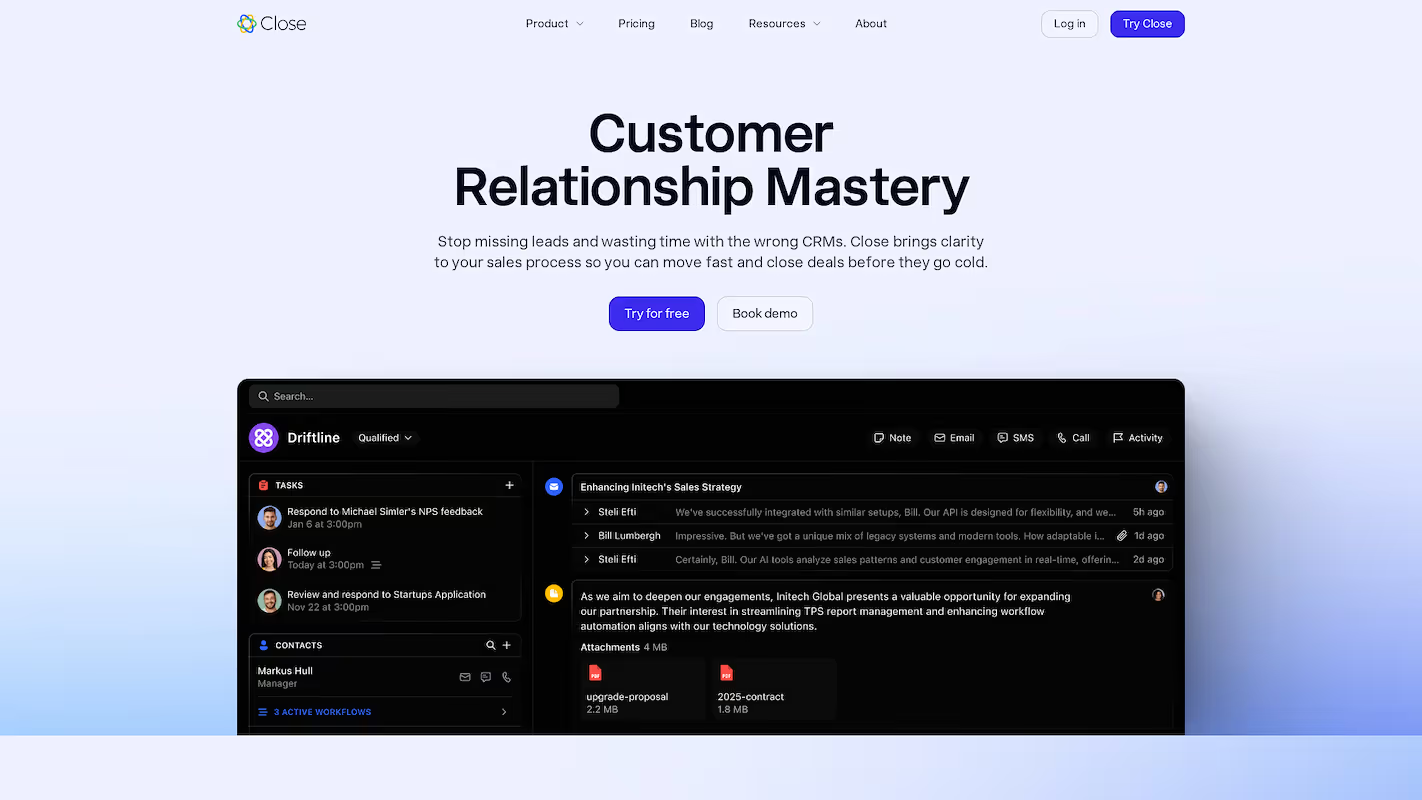
Close is a sales engagement CRM for startups and small businesses. The platform combines a phone dialer, email, and SMS into one central hub for sales teams.
It helps teams manage outreach and track all lead interactions from a single interface. This approach supports a focused workflow and removes the need for multiple separate tools.
Close's Main Features
- Manages sales opportunities and pipelines to track deal progress.
- Automates marketing workflows and manages email campaigns.
- Includes a customer support portal and knowledge base for case management.
- Provides task and activity management to organize sales workflows.
How Close Compares to Myphoner
Average Review score: 4.7/5 stars based on 1,812 G2 reviews.
- Close combines phone, email, and SMS communication in one platform. This offers a unified hub for outreach, unlike Myphoner, which focuses primarily on voice calls.
- The platform includes built-in opportunity and pipeline management. This provides native CRM functionality, which is different from Myphoner's design that requires separate CRM integration.
- It offers marketing automation features to manage email campaigns. This allows for more structured, multi-channel outreach compared to the direct calling workflow in Myphoner.
- This tool provides a customer support portal and case management. This expands its use for post-sale activities, a function not present in Myphoner's outbound-focused system.
Close’s Potential Disadvantages
- Close combines CRM, email, and SMS features into a single platform. This can introduce a learning curve for teams that only need a straightforward dialer, unlike Myphoner's simple interface designed for focused calling.
- It includes features like marketing automation and a customer support portal. These tools might be unnecessary for sales teams that prefer Myphoner's lean design, which keeps the focus on direct outbound calling.
- Some users report occasional call issues or limited mobile app functionality. For teams that require a consistently stable calling experience, Myphoner's dedicated focus on dialing might offer a more reliable workflow.
Pricing and Cost Considerations
Close offers a Solo plan starting at $9 per user per month, making it a highly accessible option for individual users. This entry-level price is competitive with Myphoner's cost-effective model for basic dialing, but Close also includes integrated CRM features at this tier.
9) Pipedrive
Pipedrive is a sales CRM designed to help teams manage their sales pipeline. It focuses on visualizing the sales process, making it an option for businesses that need a structured way to track deals from start to finish.
Pipedrive's Main Features
- Provides a visual sales pipeline to track deals through custom stages.
- Includes contact management to store and organize lead information.
- Offers activity reminders and scheduling to manage sales tasks.
- Features email integration to sync conversations directly with deals.
How Pipedrive Compares to Myphoner
Average Review score: 4.2/5 stars based on 1,799 G2 reviews.
- Pipedrive is a full CRM with a visual sales pipeline. This is different from Myphoner, which is a dedicated dialer that requires integration with a separate CRM.
- It manages the entire sales process, from lead entry to deal closure. Myphoner focuses specifically on the outbound calling stage of the sales cycle.
- The platform includes built-in email integration and activity scheduling. This provides a more unified workflow than Myphoner, which is centered on voice communication.
- Pipedrive offers detailed reporting on sales performance and pipeline health. This gives broader insights than Myphoner's call-focused metrics.
Pipedrive’s Potential Disadvantages
- Pipedrive's built-in calling feature is less advanced than a dedicated dialer. Teams needing power dialing may find Myphoner's specialized tools more effective for high-volume outreach.
- The platform's primary focus is on pipeline management. This might add complexity for users who only need a simple tool for making calls, a task where Myphoner excels.
- Some users report that its mobile app has limitations. This could be a drawback for field sales teams, whereas Myphoner is built for focused dialing from a desktop.
Pricing and Cost Considerations
Pipedrive offers several pricing tiers, starting with a basic plan. The cost depends on the features needed, making it scalable for different team sizes. For specific pricing details, visiting Pipedrive's official website is recommended.

Pipedrive is a sales CRM for teams to manage their sales pipeline. The platform gives a visual layout of the sales process, which helps businesses track deals from start to finish.
Its main function is pipeline management, but it also includes a built-in feature for sales calls. This provides basic call functions inside the CRM, a point of interest for teams that need a phone dialer.
Pipedrive's Main Features
- Manages sales pipelines with customizable stages to track deals.
- Automates sales workflows to help teams focus on sales activities.
- Integrates email to send and track messages within the CRM.
- Provides activity reminders and task management for follow-ups.
How Pipedrive Compares To Myphoner
Average Review score: 4.3/5 stars based on 2,573 G2 reviews.
- Pipedrive includes a full CRM with a visual sales pipeline. This allows teams to manage the entire sales process in one place, unlike Myphoner, which focuses only on dialing.
- It offers built-in opportunity and pipeline management to track deals from start to finish. Myphoner, in comparison, is designed for outreach calls and does not have native deal tracking.
- The tool integrates email communication directly into the sales workflow. This creates a unified record of interactions, while Myphoner is built primarily for voice-based outreach.
- The platform automates sales workflows and marketing campaigns. This helps teams reduce manual tasks and provides a broader scope than Myphoner's focus on direct call activities.
Pipedrive’s Potential Disadvantages
- Pipedrive includes its call feature as part of a larger CRM. This is different from Myphoner, which is a dedicated dialer built for focused outbound call campaigns.
- The platform's primary focus is pipeline management, which might add complexity for users who only need a simple tool for calls. Myphoner's simple interface, by comparison, is built just for that task.
- Some users report its mobile app has limitations. This could be a drawback for field sales teams, whereas Myphoner is designed for a focused call workflow from a desktop.
Pricing and Cost Considerations
Pipedrive's pricing starts at $24 per user per month for its Lite plan. This contrasts with Myphoner's model, which is built for teams needing a cost-effective, dedicated dialer rather than a full CRM with pipeline management.
10) Zoho CRM
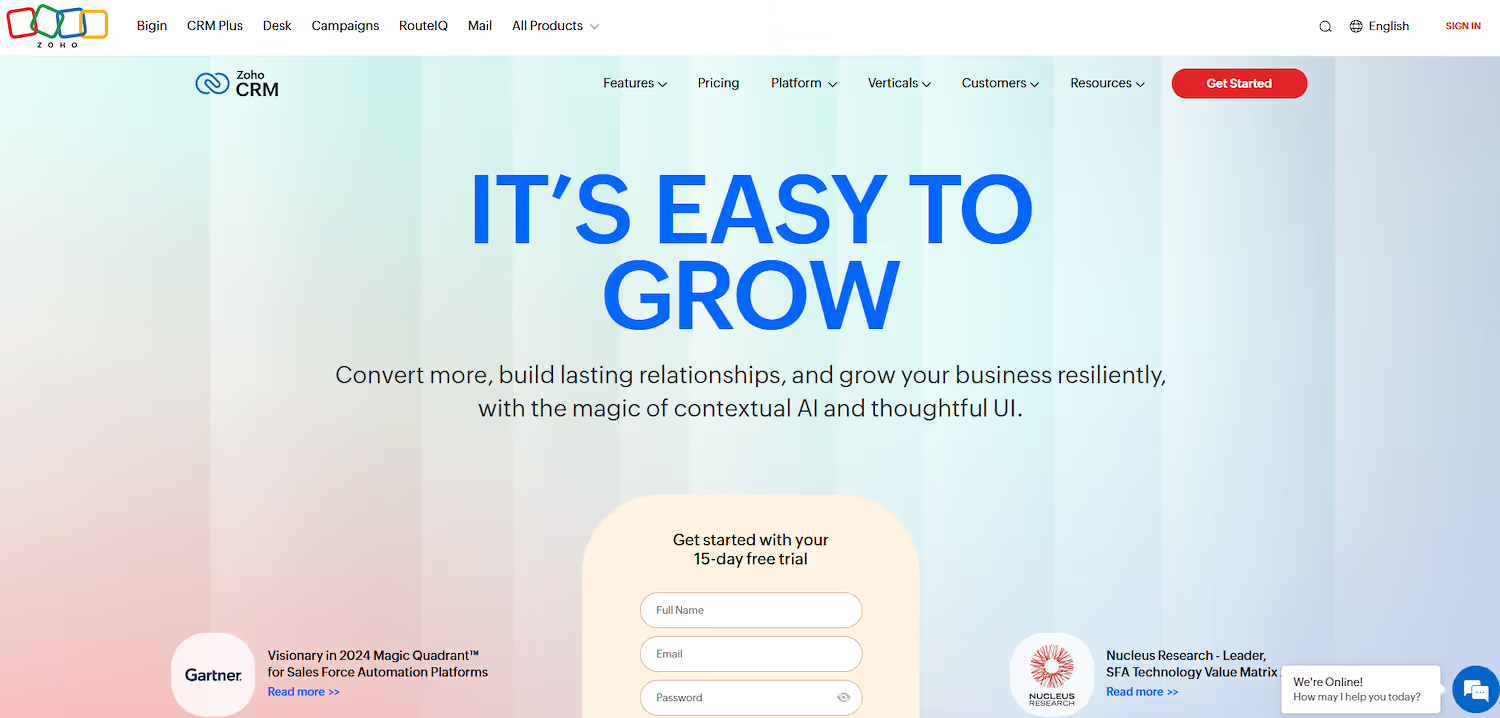
Zoho CRM is a customer relationship management platform. It unifies sales, marketing, and support activities into one system. The software offers tools to track leads and automate sales processes.
It is an option for businesses that require a broad solution for customer interactions, rather than a dedicated phone dialer.
Zoho CRM's Main Features
- Manages sales opportunities and pipelines to track deal progress.
- Automates marketing activities and manages email campaigns.
- Provides customer support with case management and a knowledge base.
- Includes task and activity management to organize sales workflows.
How Zoho CRM Compares To Myphoner
Average Review score: 4.1/5 stars based on 2,820 G2 reviews.
- Zoho CRM includes a full sales pipeline to manage deals from start to finish. This provides a complete view of the sales process, unlike Myphoner, which focuses only on the dialing part of outreach.
- The platform offers marketing automation tools for email campaigns. This allows for a multi-channel approach, a broader scope than Myphoner's voice-centric design.
- It provides customer support features like case management. This helps manage post-sale interactions, a function not available in Myphoner, which is built for outbound sales.
- This tool uses an AI assistant to offer predictive insights. This gives data-driven guidance, which is a more advanced feature compared to Myphoner's direct dialing workflow.
Zoho CRM’s Potential Disadvantages
- Zoho CRM is a full CRM platform, so its phone features are part of a larger system. This differs from Myphoner, which is a dedicated dialer built for focused outbound calls.
- The platform's many features can create a steep learning curve for new users. In comparison, Myphoner has a simple interface that lets agents begin calls with little setup.
- Some users say the tool can be slow or have occasional lags. Myphoner's focused design may provide a more stable experience for teams that make many calls.
Pricing and Cost Considerations
Zoho CRM offers a free plan and paid tiers starting at $14 per user per month. This provides a full CRM solution at a low entry point. Myphoner is built for teams that need a cost-effective, dedicated dialer without the broader CRM functions.
Which One Should You Go With?
Choosing a Myphoner alternative depends on many variables, including your team’s size and sales process. This guide shared several options to help you compare features and find the right fit for your business needs.
For teams interested in automating sales tasks, 11x offers autonomous agents for prospect discovery and lead qualification. This can unify outreach and data management, replacing the need for multiple separate tools.


